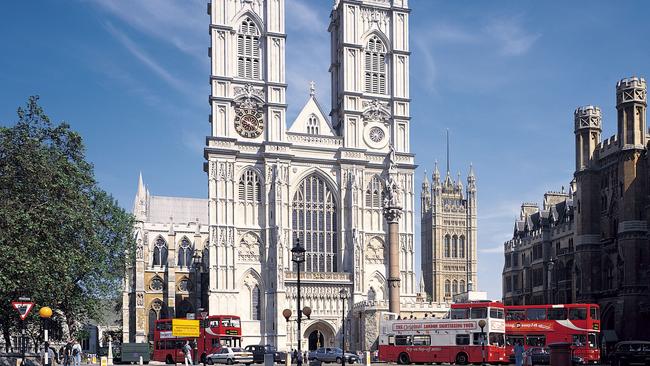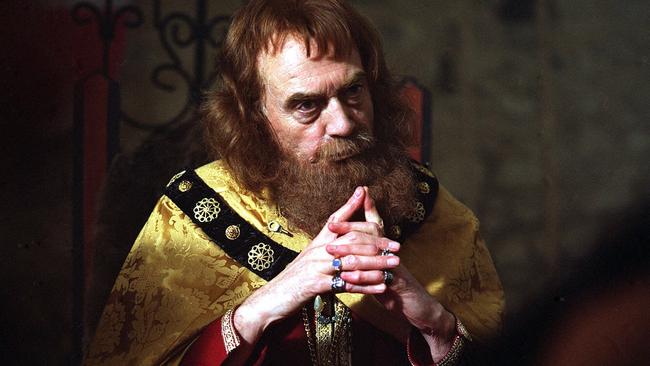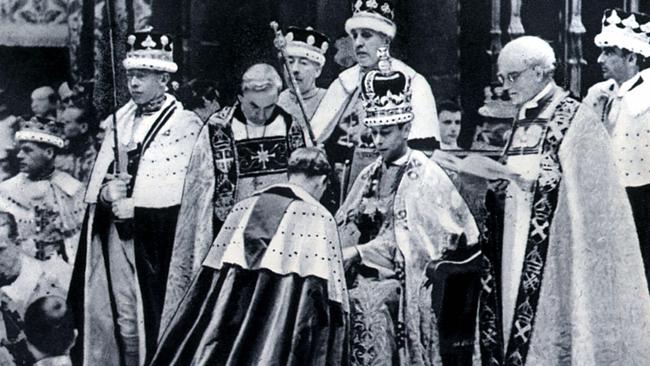Westminster Abbey’s royal founder died days after dream realised
The legacy of English King Edward the Confessor included one of the most famous churches in history, site of royal coronations and weddings.

Today in History
Don't miss out on the headlines from Today in History. Followed categories will be added to My News.
Dedicated to justice and chastity, it is no surprise the legacy of English king Edward the Confessor included a grand Romanesque-style church built on a marshy island west of the Anglo-Saxon settlement Lundenwic.
England was home to about 1 million people when Edward paid penance for reneging on a trip to Rome to visit Pope Leo by rebuilding a Benedictine monastery.
By the time Westminster Cathedral was consecrated 950 years ago on Holy Innocents’ Day, December 28, 1065, Edward was seriously ill. He died on January 5, 1066, and his body was interred in the abbey church.
A Christian church likely stood on the highest point of Thorney Island, flanked by two channels of the Tyburn River that entered the Thames nearby, from 604AD, eight years after the first Christian mission under St Augustine landed near Canterbury. Ethelbert, uncle of the king of the East Saxons, had founded St Paul’s at Ludgate, further east, in 604AD, probably to replace a pagan Saxon temple.
Thorney Island church was home to about 12 Benedictine monks by 960AD, while England’s Danish ruler from 1016, King Canute, probably built the first palace at Westminster.
Canute’s palace had burnt down when Edward envisioned an royal-ecclesiastic complex with a palace, large monastery and an abbey church suitable for royal functions and burials.

Edward was born in 1003, son of Ethelred II “the Unready” and Emma, daughter of Richard I of Normandy, who married King Canute after Ethelred’s death in 1016.
The family fled to Normandy when the Danes seized power in 1013, although Ethelred was reinstated in 1014. Edward remained in exile with his brother Alfred, living with an uncle, and he enjoyed assisting at Mass and in church offices.
He led an abortive attempt to capture the English crown after Canute’s death in 1035. Power passed to Canute’s illegitimate son Harold in 1037 then, with his mother’s consent, to Edward’s stepbrother Hardicanute, born after Emma’s marriage to Canute.
Canute had left control of shires in the hands of several powerful earls, including Leofric of Mercia (Lady Godiva’s husband), Siward of Northumbria and the formidable Godwin of Wessex. Through Godwin’s influence, Edward took the throne in June 1042 after the deaths of Harold in 1040, and Hardicanute, who died at a wedding drinking party in 1042.
According to the Anglo-Saxon Chronicle, Edward immediately deprived his mother of her estates, reducing her to relative poverty.
He married Godwin’s eldest daughter Edith in 1045. Church writers campaigning for Edward’s sainthood later claimed he married on the condition that Edith accepted he had taken a vow of chastity, so would have no heirs. Edward’s supporters explain that Edith, educated at Wilton Abbey where noble daughters were taught to read, write, paint, weave and were trained in courtly arts, was also deeply spiritual and pious. But modern historians challenge the theory Edward remained childless “due to deliberate abstention from sexual relations” as lacking plausibility and authority.

Edward’s choice to surround himself with companions from Normandy as advisers displeased Saxon nobles on the Witan council of advisers. When several Normans were killed at Dover, Kent, in 1051, Edward ordered his father-in-law Godwin to punish the people of Dover. Godwin refused and instead raised an army against the king.
When the earls of Mercia and Northumbria, loyal to Edward, raised armies to outnumber Godwin, he left England to live with family in Flanders.
Edward also confined Edith to Wherwell monastery in Winchester, possibly hoping to divorce her, and seized her assets. Edith later complained her banishment was against the law of Christian religion, and a ceremonial parade heralded her reinstatement as queen when Godwin raised an army against the undefended king to make a forced return in 1052.
Edward was forced to send his Norman advisers back to Normandy, while Godwin’s sons took military control after Godwin’s death in 1053.
As Edward warded off political threats by accepting Godwin control, England was relatively peaceful for the final 15 years of Edward’s reign. Prosperity rose with improved agricultural techniques while taxation was comparatively low. Edward did not fight expensive military campaigns, was not extravagant and lived off £5500 a year revenues from his own lands. From 1052 Edward turned his attention to the construction of Westminster Abbey, living just long enough to see its completion.
Originally published as Westminster Abbey’s royal founder died days after dream realised


